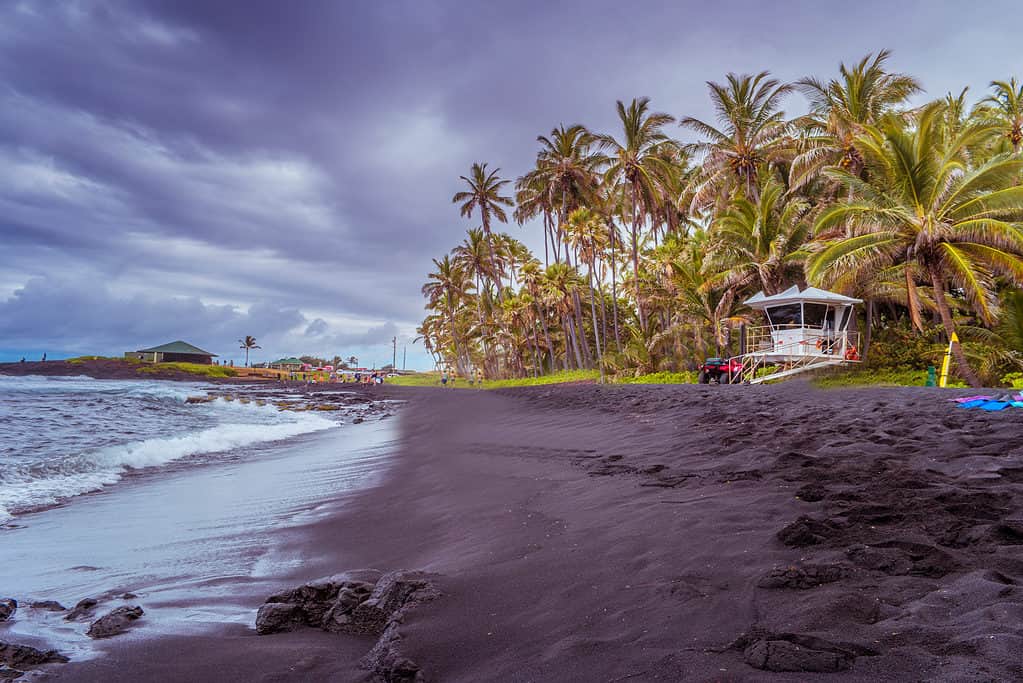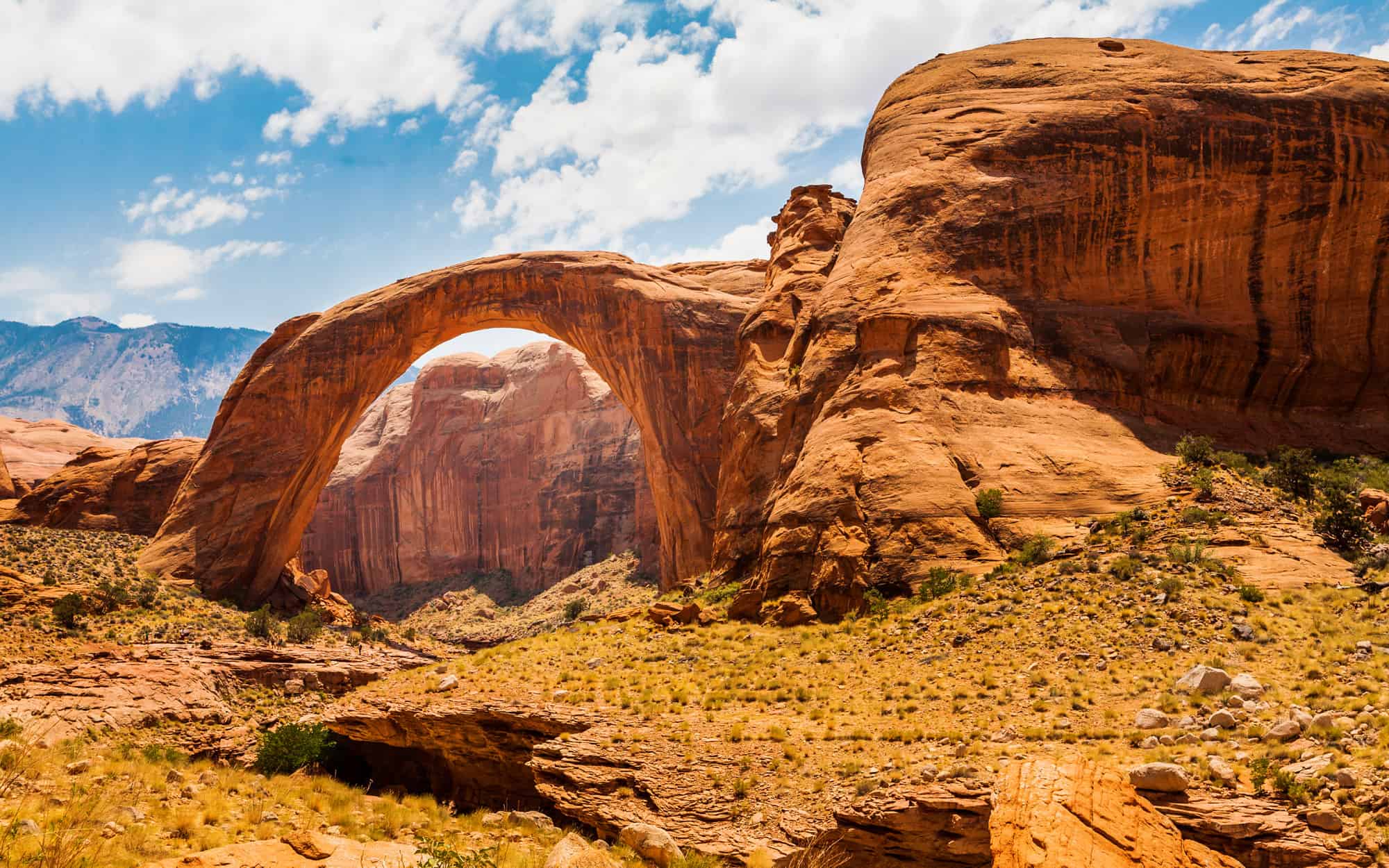Weathering and erosion are natural processes that involve the disintegration, wearing down, and transportation of earth materials like rock and soil. Both weathering and erosion impact the environment and shape our planet in various ways — one of them being literal. For example, both of these processes change the landscape of the earth, breaking down its materials and transporting them to other locations, causing sedimentation. These impacts can dislodge plants, invertebrates, and insects, destroy coral, and even kill off fish by decreasing their food sources or suffocating fish eggs. The sediment particles can also be toxic in nature, which poses threats to all living organisms. While weathering and erosion occur naturally, humans do contribute to the processes and their toxicity. Read on to learn the difference between weathering and erosion — and how both are impacting our planet.
Types of Weathering and Erosion Processes
Weathering involves the disintegration or alteration of earth materials — but not the movement of them from the site of the degradation. Erosion, on the other hand, describes the wearing away and transportation of earth materials (such as soil and rock) by natural forces like wind and rain. In short, weathering breaks down earth material while erosion moves said material from its original location. For example, weathering might cause rocks to break apart on a cliff, while erosion might transport the rock fragments off the edge.

The erosion of volcanic soil creates the rich black sand of Punalu’u Beach.
©ThroughLensPhotosNVideos/Shutterstock.com
Weathering Processes
Here are four common types of weathering processes:
- Freeze-thaw weathering: This weathering process occurs when water continues to freeze and thaw in the cracks of rocks, causing them to deepen until it completely breaks the rock into multiple pieces.
- Exfoliation (onion skin) weathering: Often a result of thermal expansion from extreme temperatures or direct sunlight, this type of weathering involves pieces of rock chipping or peeling off the surface of a larger rock below.
- Chemical weathering: Chemical weathering is often caused by slightly acidic rain. When rock or building materials have a chemical reaction with water or other substances, they can begin to deteriorate.
- Biological weathering: This type of weathering is a result of plants, animals, and other living things causing stress or adding pressure to rocks and causing them to disintegrate or break up.
Erosion Processes
Here are three common types of erosion processes:
- Surface erosion: Surface erosion occurs when rain or wind washes or blows away soil particles by detaching them from their surface.
- Fluvial erosion: This type of erosion describes the movement of deposition on a riverbed by rushing water.
- Mass-movement erosion: This erosion process occurs on slopes, resulting in mass movements like landslides due to gravitational factors.
How Climate and Geology Affect Weathering and Erosion
Climate change results in threats like greenhouse gases and increased rainfall, both of which can lead to an increase in chemical reactions between rainwater and rock — as mentioned above as the chemical weathering process.
Additionally, overall, a warmer and wetter climate will produce more weathering and erosion. This type of climate contributes greatly to biological weathering since plants and bacteria grow faster in warmer, more humid temperatures.
Climate change is also known to cause more severe storms and natural disasters, both of which can drive erosion to be more prevalent and severe. This occurs because the atmosphere absorbs more water vapor which fuels the development of powerful storms. Additionally, a warmer atmosphere and warmer oceans lead to higher wind speeds and tropical storms/hurricanes.
Examples of Weathering and Erosion in Action
Weathering and erosion work together, with weathering typically occurring first and erosion carrying the weathered material away from its source.
Examples of Weathering
- A broken rock is caused by water freezing on its surface.
- Potholes in the road.
- Broken or deformed sidewalks from tree roots growing underneath.
- Cracked rocks by the ocean due to salt water.
Examples of Erosion
- Rushing water carrying soil from its riverbed.
- Wind transporting fallen rocks away from a mountain.
- Flash flooding carrying sand off the beach and onto the boardwalk.
- Dust storms are caused by heavy winds.

Erosion often occurs on steep surfaces like mountains.
©iStock.com/Paul Owens
Human Impacts on Weathering and Erosion
Because humans contribute to climate change, they also contribute to weathering and erosion. For example, farming practices, strip mining, and industrialization can impact weathering and erosion as they destroy ecosystems’ natural growth and evolution. This can make it difficult for the land to absorb rainfall, thus leading to erosion. Another example is deforestation, which can increase the amount of unabsorbed carbon dioxide in the atmosphere, leading to more acidic rainfalls.
Additionally, pollution (which humans greatly contribute to) causes more acid rain, and activities like landscape evolution, soil tilling, and modifications of streams and rivers can also contribute to and speed up instances of weathering and erosion.
Thank you for reading! Have some feedback for us? Contact the AZ Animals editorial team.








